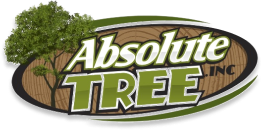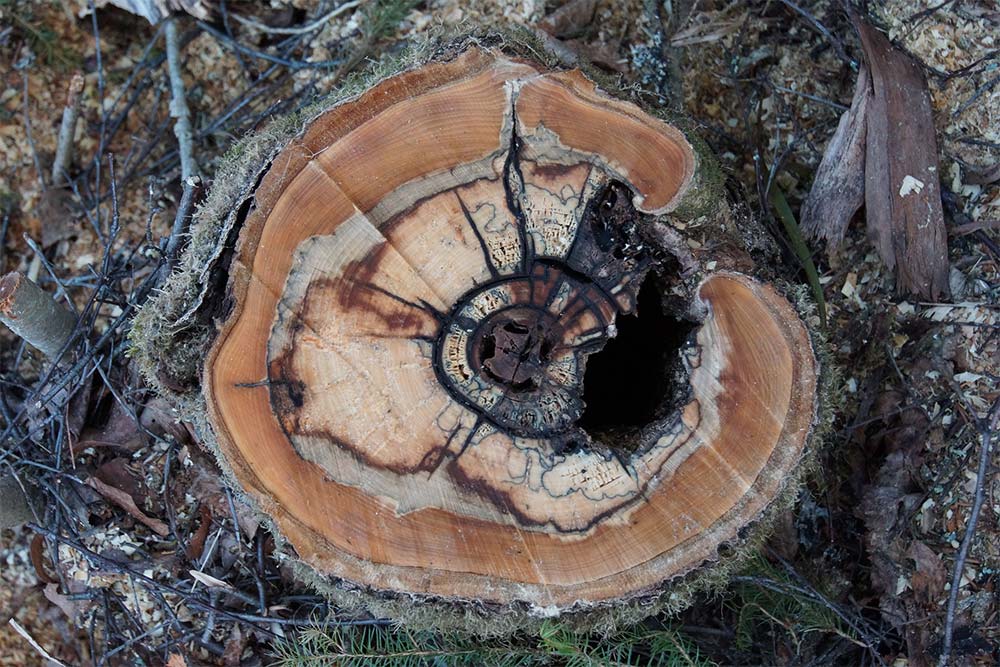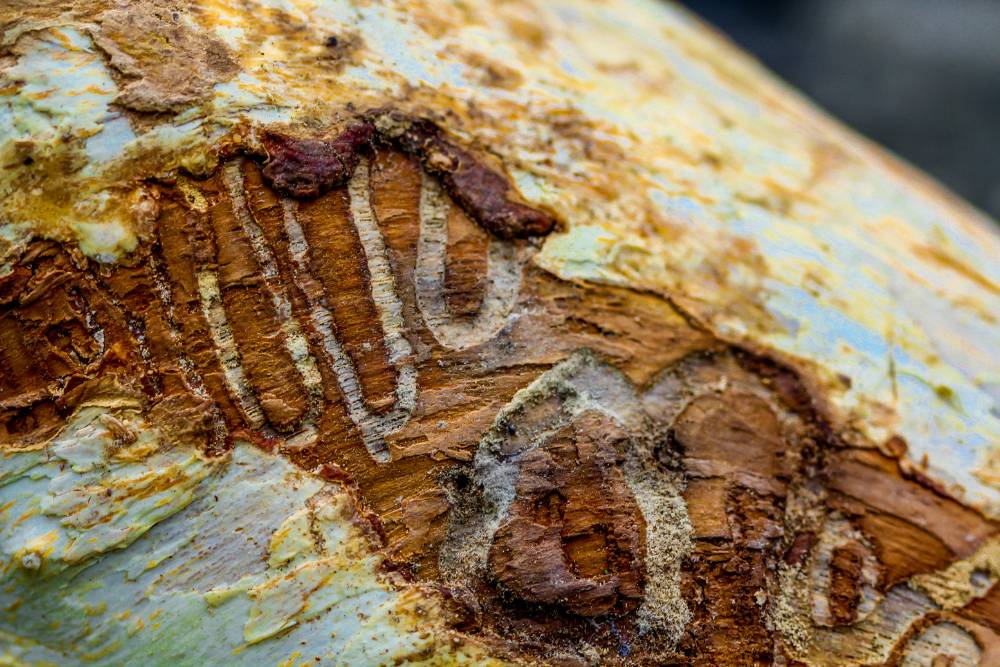We Go Out On a Limb For You
Our fully licensed and insured arborists are available 24/7
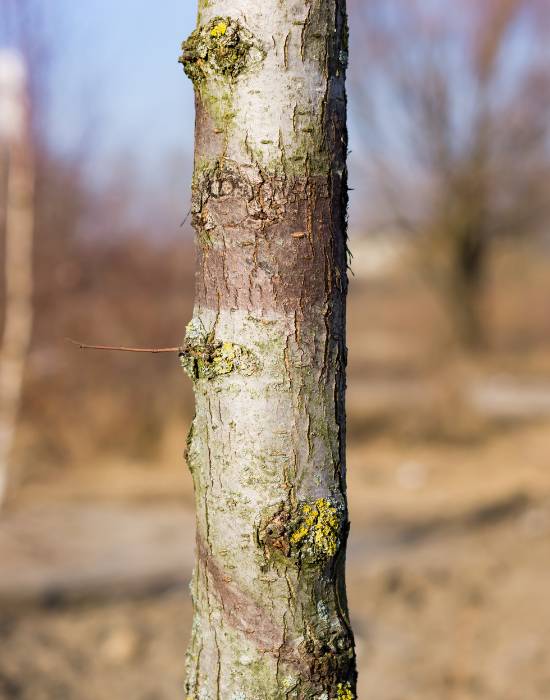
What to Expect
The tree health professionals at Absolute Tree are experts in insect and disease diagnosis, treatment, and prevention. You can expect a detailed assessment of your trees to identify the cause and extent of the problem. We'll give you recommendations for the best course of action to remediate the current situation and suggestions for how to prevent the issue from coming back.
Keep Your Trees Healthy and Bug Free
Just like people, trees get sick, too. Of course, since trees can't tell us how they feel, diagnosing a tree disease is tougher than diagnosing a human one. Still, managing tree ailments, whether caused by disease or insect pests, is essential to the life and health of your trees. Fortunately, we have highly educated and skilled arborists who are trained in the area of tree disorders and can come to the rescue. If you suspect a tree disease has infected your greenery or an insect pest is attacking your trees, call our Absolute Tree pest and disease experts at 703-969-6207.
How Important is Treating My Sick Tree?
In a word—very. Tree disease and proper diagnosis should not be taken lightly. If not treated properly, your tree’s disease could spread to your entire grove and result in permanent damage. There are many diseases that can attack your remaining treeline. Typically, they are classified in three ways:
Fungus
Learn more
Fungal diseases can affect any part of the tree. Often there is the tell-tale sign of mushrooms or conches growing from the tree's base, while other times, fungi attack the tree's roots, causing the condition "root rot."
Bacteria
Learn more
Bacteria are microscopic organisms often spread from tree to tree by pests. Bacterial diseases can cause your tree to have cankers and galls, in addition to the leaves showing spots or looking scorched. Some bacteria affect tree physiology by incorporating their DNA into the host tree.
Viruses
Learn more
Viruses are microscopic pathogens that require living cells to host their reproduction. Viruses are often associated with stunted growth, reduced cold tolerance, and decreased photosynthesis. Viruses attack trees through tissue wounds or can be spread by insect pests such as aphids, leafhoppers, and nematodes.
If you notice spotted leaves or strange growths on your tree limbs, don’t panic. Our tree doctors can easily determine if your trees are affected by a fungus, bacteria, or a virus and provide proper solutions to bring your trees back to full health. Or, if the tree cannot be saved, we can quickly remove it and haul away the remains to prevent the pest or disease from spreading.
My Tree Has Funny Growths, Now What?
Call in the tree health professionals! A certified arborist can inspect your tree and diagnose the problem. Sometimes, the solution can be simple—as easy as anti-fungal treatments and trunk injections. Other times, whole trees must be removed.
Whatever you do, don’t take matters into your own hands. Call a skilled tree surgeon for a proper diagnosis and treatment before it is too late.
Bug Off, Insects!
Another reason to follow good tree care and maintenance is so your trees remain healthy and strong. The last thing you want on your property is a bunch of fragile trees. Weakened trees are highly susceptible to parasites and pests and have very little chance of survival if attacked by insects. Stressed or weakened trees can also become a safety hazard during high winds and thunderstorms.
The following are infestation signs that are typical of cicadas, aphids and weevils:
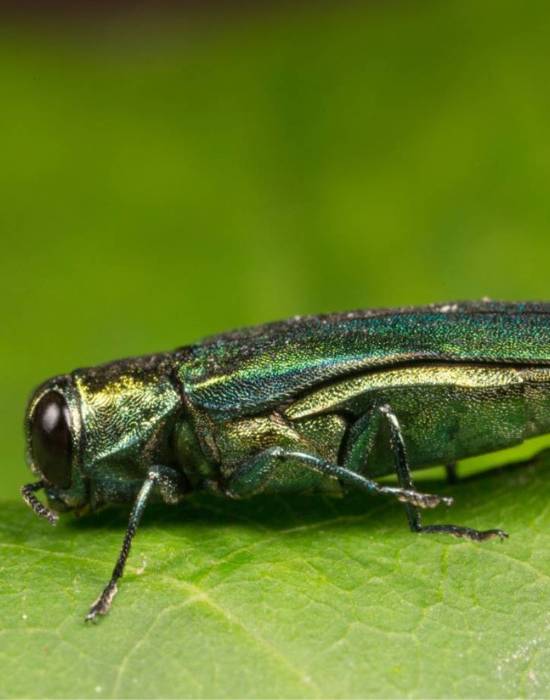

We have used Absolute Tree Service several times over the years. They've always provided a great price and excellent, prompt service. They clearly make the health of the trees a priority, which we appreciate. Their crews are safe and careful, and respectful of our property.
Alan R.
Help, There Are Insects Attacking My Trees!
Diagnosis is key. And that is where we can help. One of our certified arborists can make a house call to identify and inspect the infestation that might be plaguing your trees. In most cases, our experts can diagnose your tree issue and provide an immediate treatment option—such as a tree injection.
We have experience in treating infestations from the following pests:
Aphids
Learn more
Aphids are small yellow to light green insects that use piercing mouthparts to suck juices from plants and trees. Large infestations can hurt the aesthetic of our trees and, in high enough numbers, kill them.
Weevils
Learn more
Weevils are a type of beetle that are known to attack white pines and yellow poplars in Virginia. Adult female weevils chew holes into trunks and branches where they deposit their eggs. Upon hatching, the weevil larvae feed on the interior of the branches.
Borers
Learn more
Borers are chewing insects that feed on the inner bark and wood of trees. Most of these destructive pests are the immature forms (larvae) of both moths and beetles—borers cause branch die-back, structural weakness, and decline in plants and trees.
Moths
Learn more
Moths like the spongy moth are pests in Virginia. The spongy moth caterpillars feed on many tree species, but are shown to prefer oaks. In fact, Virginia has introduced "slow the spread" initiative that works to minimize the movement of this pest.
Beetles
Learn more
Beetles like the southern pine beetle are considered highly destructive pests. In high enough populations, beetles can decimate trees, particularly if the trees are already stressed. These pests have occasionally reached outbreak levels in Virginia forests.
Cicadas
Learn more
Cicadas are brood insects, meaning that groups of them emerge after a long period of dormancy as long as 17 years. These pests affect trees not by feeding on them but when the adult females cut slits into tree branches to lay their eggs.
Locusts
Learn more
Locusts are similar to grasshoppers. However, locusts migrate in enormous swarms. These swarms of leaf-eating locusts have been known to decimate crops and can severely injure trees by voraciously consuming foliage.
Worms
Learn more
Worm pests are not true worms but large collections of caterpillars, such as the fall web worm, bag worms, and tent caterpillars. These pests are voracious eaters who affect the aesthetics of ornamental plants by chewing leaves and creating their large webs.
Call Absolute Tree for the Absolute Best Insect Pest Treatment & Prevention!
If you notice spotted leaves or strange growths on your tree limbs, don’t panic. Just give Absolute Tree a call. Our tree doctors can easily determine if you have a fungus, bacteria or a virus and provide proper solutions.
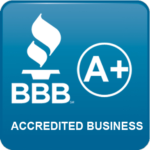
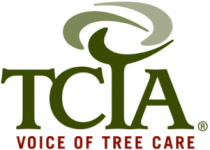
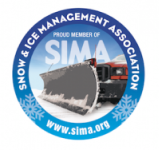

Frequently Asked Questions About Tree Disease and Insect Control
With so many different pathogens and destructive pests damaging trees in the Northern Virginia area, we get a lot of calls from homeowners, property managers, and business owners asking for help identifying and controlling diseases and infestations.
We pulled together answers to some of the most common questions. But if you need more information, give us a call at 703-969-6207, and we’ll get you an answer!
The answer is: it depends.
Leaf spot disease is an umbrella term that covers many different diseases that affect foliage.
Leaf spot can be a bacterial or a fungal disease, though fungal leaf spot diseases are the most common.
If your tree has leaf spotting, contact Absolute Tree Service for an inspection and assessment.
It depends on the type of spots and what’s causing them.
Many spots on tree leaves are a cosmetic or aesthetic problem. However, some leaf spots result from fungal or bacterial diseases that can kill your trees over time. It's important to know the difference.
The main danger to your trees is the loss of healthy leaves. A tree’s leaves are its energy source; they provide a tree with food energy through photosynthesis. If leaf spot disease kills so many leaves that your tree doesn’t have enough energy stores, your tree can decline or even die.
Most bacterial leaf spot diseases form a yellow edge or "halo" around infected areas of a leaf. The spot's interior may be tan, brown, or black, but will always have a yellow border.
These yellow margins are less common in fungal leaf spots but do appear with some. Fungal leaf disease is more easily identified by the spores that develop within the leaf spot.
Keep Your Trees Healthy
The most effective way to reduce leaf spot diseases is to keep your trees and whole garden healthy. You'll find some helpful information about how to do that in our article on Integrated Pest Management.
Healthy trees are better able to withstand diseases and more likely to put out new leaves after they've dropped diseased ones. And having sufficient water and nutrients ensures your tree will continue growing despite the stress caused by leaf spots.
Water the Right Way
If you water your garden in the evening, you may be creating conditions for fungal diseases to thrive and spread. And cool evenings and wet foliage also attract slugs and snails, which nobody wants in their garden!
It's always a good idea to water early in the morning. This ensures that any excess water left on leaves, branches, or the soil surface will evaporate during the day.
Clean Up Well
Another important thing to do is rake up and discard fallen twigs, branches, and dead leaves as soon as they fall. Just because the leaves are dead doesn't mean that the fungus is also dead.
Infected branches and leaves can spread fungi and bacteria and create places for fungal spores to overwinter.
And remember to discard the infected material. If you rake leaves into a pile and leave them in your garden, wind and rain will carry spores back to your trees.
Plant Disease Resistant Trees and Shrubs
Prevention is always better than a cure! While you may not be able to eliminate unsightly leaf spots, you can minimize infections by planting species and cultivars with good genetic resistance to common diseases. For example, there are many excellent apple and crabapple varieties that have good resistance to apple scab.
Apply Preventative Treatments
Many leaf spot diseases cause only cosmetic damage and don’t need treatment. But some, such as apple scab, are serious enough to warrant preventive treatment with a fungicide.
Consult Absolute Tree Service to properly diagnose tree leaf issues before spraying trees yourself. If you've misidentified the leaf spots' cause, your treatment will likely do more harm than good. It's usually best to let a professional apply the necessary treatment. That way, you know that the proper treatment will be used and that it will be applied correctly and at the right time (timing is critical).
Bacterial Leaf Scorch is caused by a destructive bacterium called Xylella fastidiosa. The name Xylella comes from the Greek word xylem, the name of the vital tissue inside trees that transfers water and water-soluble nutrients from the tree's roots to its branches and leaves.
Although it looks similar to leaf scorch caused by environmental factors, BLS on leaves displays a yellowed strip of leaf tissue between the healthy green portion of a leaf and its infected brown leaf tips or edges. Different tree species show differing disease patterns on their leaves. Still, the margin of yellow leaf tissue is common to all.
Since BLS damage shows up in late summer when leaf scorch from drought stress is also present, it can be difficult to distinguish, so the yellow outline is a key identifier.
Another notable identifier is that leaf damage from BLS starts with older leaves and moves upwards to leaves at the tips of branches. In contrast, water stress typically affects new leaves first, as they are the most distant points a tree sends water to and require the most energy.
To accurately identify BLS, it must be analyzed in a lab. Rutgers University has a diagnostic plant laboratory, and you can search for BLS information on its website.
Bacterial leaf scorch will also stand out during summers that are not excessively hot and receive enough rainfall to keep trees hydrated. Healthy, uninfected trees will have full, leafy crowns and show no signs of water stress. BLS-infected trees will have scorched leaves despite the ideal growing conditions.
EAB is the most devastating threat to Virginia forests. Ash trees across the state are dying at an alarming rate, with little sign of the infestation slowing down.
The emerald green insect is tiny–less than 0.5" long–but the borer (immature phase of the EAB life cycle) does a lot of damage by feeding on the vessels that transport nutrients up and down the tree, cutting off the tree's nutrient supply.
Emerald Ash Borer was confirmed in Northern Virginia in 2008 and is most active in May-August.
You can consult with a qualified tree service with experience in treating and preventing tree pests and diseases. Absolute Tree Service is one such company, and our professional team can help your trees get and stay healthy!
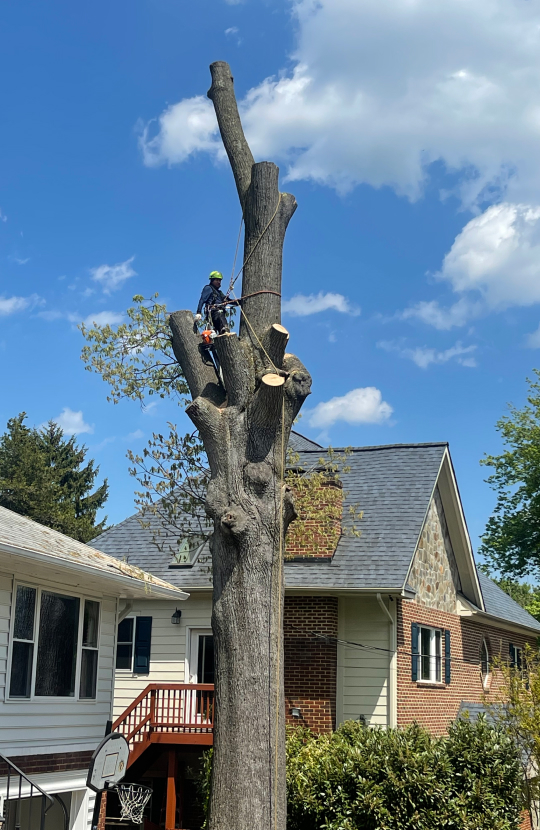
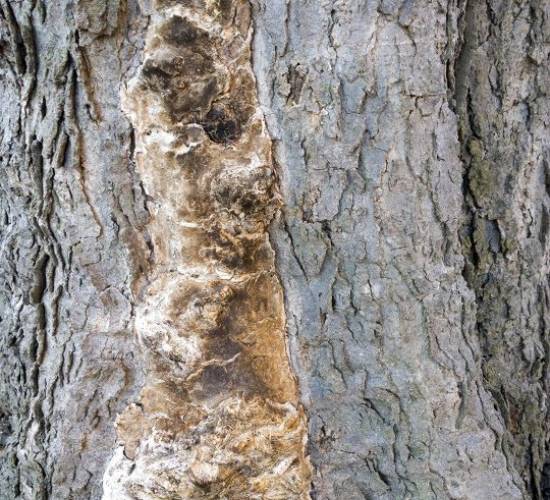
Why Hire Absolute Tree for Tree Health Management?
Tree Health, Insect Control & Disease Treatment in NoVA
When your trees are sick, you want a local arborist with extensive knowledge of the pests, fungi, bacteria, and viruses that infect and infest trees in Northern Virginia. You can rely on the tree health experts at Absolute Tree for insect control and disease treatment in these locations:
Annandale, VA
Clifton, VA
Falls Church, VA
Lakeridge, VA
Lorton, VA
Reston, VA
Woodbridge, VA
If your trees are infested with pests or looking sick, give us a call at 703-969-6207. You can also use our online form to request an arborist visit.
